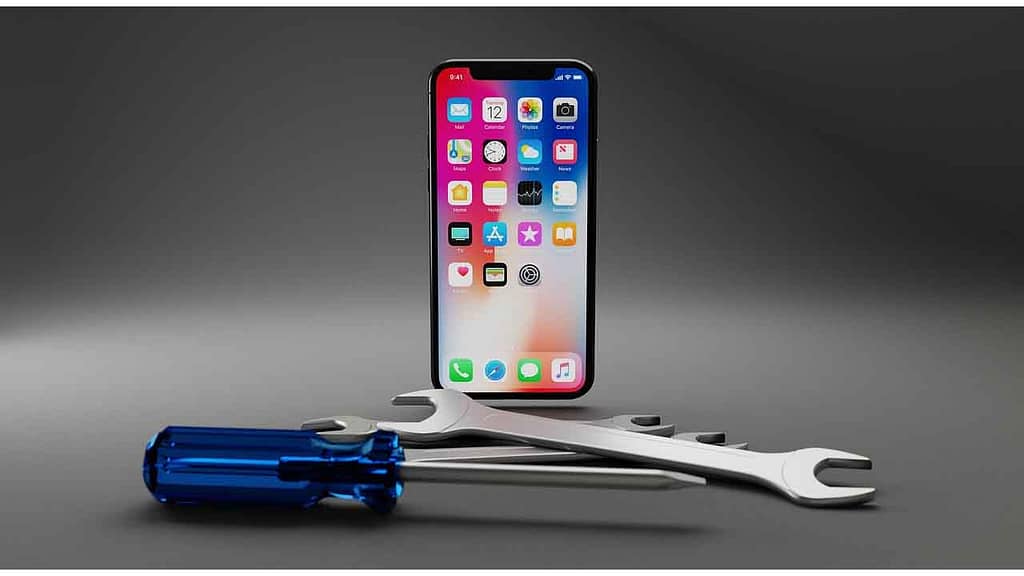Mobile devices have become an integral part of our lives, keeping us connected and providing various functionalities at our fingertips. However, just like any other electronic device, mobile phones and tablets are not immune to issues and glitches. In this article, we will explore some of the common problems faced by mobile device users and provide practical solutions to address them effectively.

1. Battery Issues
Is your mobile device draining battery quickly or not holding a charge? Here’s what you can do.
One of the most common problems experienced by mobile device users is related to battery performance. Over time, batteries can degrade, resulting in reduced battery life and poor performance. However, before assuming the battery needs replacement, there are a few steps you can take to improve its performance.
If your device’s battery drains quickly, consider adjusting settings such as screen brightness, background app refresh, and push notifications. Closing unused apps and disabling unnecessary features like location services and Bluetooth can also help conserve battery life. Additionally, calibrating the battery by fully charging it and then fully discharging it once in a while can help recalibrate the battery’s capacity indicator.
If these steps don’t resolve the issue, it might be time to replace the battery. Seek professional assistance or refer to the manufacturer’s guidelines for replacing the battery.
2. Screen Damage
Did you accidentally crack your mobile device’s screen? Here’s how you can deal with screen damage.
Screen damage is a common problem faced by mobile device users. Accidental drops or impacts can result in cracked screens, unresponsive touchscreens, or even complete screen failure. If your device’s screen is damaged, there are
a few options you can consider.
For minor scratches, you can apply a screen protector to prevent further damage and make the scratches less visible. However, for more severe damage, such as a cracked screen, it is advisable to seek professional repair services. Skilled technicians can replace the damaged screen with a genuine replacement, ensuring optimal functionality and preserving the device’s resale value.
3. Charging Problems
Is your mobile device not charging or experiencing slow charging? Here’s what you can do to fix charging issues.
Charging problems can be frustrating, especially when you need your device to be fully charged. If you encounter charging-related issues, try the following troubleshooting steps.
First, check the charging cable and power adapter for any visible damage. If possible, try using a different cable and adapter to rule out any potential issues with the accessories. Additionally, inspect the charging port on your device for dirt, lint, or debris. Use a clean, dry toothbrush or a can of compressed air to remove any obstructions carefully.
If the problem persists, restarting your device or performing a soft reset can sometimes resolve charging issues. If none of these steps work, it may be necessary to contact a professional repair service or reach out to the device manufacturer for further assistance.
4. Software Glitches
Is your mobile device experiencing software glitches or freezing frequently? Here are some steps to address common software problems.
Software glitches can cause your mobile device to freeze, crash, or behave unpredictably. These issues are often related to outdated software or conflicts between apps. If you’re facing software-related problems, consider the following steps to troubleshoot and resolve them.
First, ensure that your device’s software is up to date. Manufacturers regularly release software updates that include bug fixes and performance improvements. Updating your device’s software can address many software-related issues.
If updating the software doesn’t fix the problem, try uninstalling any recently installed apps that may be causing conflicts. You can also clear the cache of apps that are misbehaving or perform a factory reset as a last resort. However, be aware that a factory reset will erase all data on your device, so make sure to back up your important files before proceeding.
5. Overheating
Is your mobile device getting unusually hot? Here’s how you can prevent overheating and deal with it if it occurs.
Mobile devices can sometimes become hot, especially during resource-intensive tasks or when exposed to direct sunlight. While it is normal for devices to generate some heat, excessive heat can be a cause for concern. Here are some tips to prevent overheating and address the issue if it occurs.
Avoid using your device in extreme temperatures or direct sunlight for prolonged periods. Excessive heat can affect the device’s performance and battery life. If your device feels hot, remove any protective cases or covers to allow better airflow and dissipate heat more effectively.
If your device is overheating frequently, consider closing unused apps and reducing multitasking. Resource-intensive tasks, such as gaming or running demanding applications, can put a strain on the device’s processor and cause it to overheat. Also, ensure that your device’s software is up to date, as software updates often include performance optimizations that can help prevent overheating issues.
6. Water Damage
Accidentally dropped your mobile device in water? Here’s how to handle water damage effectively.
Water damage is a serious concern for mobile device users. When exposed to water or other liquids, the internal components of the device can corrode, leading to permanent damage. If your device gets wet, it’s crucial to act quickly to minimize the damage.
Immediately power off your device and remove it from the water source. Dry the exterior using a soft cloth, ensuring no moisture remains on the surface. Do not use
a hairdryer or apply direct heat, as it can cause further damage.
To remove any moisture trapped inside the device, place it in a container of uncooked rice or silica gel packets. Leave it undisturbed for at least 48 hours to allow the moisture to be absorbed. Alternatively, you can use specialized moisture-absorbing products designed for electronic devices.
After the drying period, try turning on your device. If it doesn’t power on or exhibits unusual behavior, it’s crucial to seek professional assistance immediately. Mobile repair specialists have the expertise and equipment to assess the extent of the water damage and perform the necessary repairs.
7. Slow Performance
Is your mobile device running slowly? Here’s how you can optimize its performance.
Slow performance can be frustrating and hinder your overall mobile experience. However, there are several steps you can take to optimize your device’s performance.
First, clear unnecessary files and app caches that may be taking up valuable storage space. Delete unused apps and transfer large media files to cloud storage or a computer to free up storage capacity. Regularly organizing and managing your files can significantly improve your device’s responsiveness.
Additionally, consider disabling or reducing animation and transition effects in your device’s settings. These visual effects consume system resources and can contribute to sluggish performance. Moreover, limit the number of widgets or live wallpapers on your home screen, as they can also impact device performance.
If these steps don’t yield significant improvements, consider performing a factory reset after backing up your important data. A factory reset restores your device to its original state, eliminating any underlying software issues that may be causing the slowdown.
8. Connectivity Issues
Are you experiencing problems with Wi-Fi or mobile network connectivity? Here’s what you can do to troubleshoot connectivity issues.
Connectivity issues can disrupt your ability to browse the internet, make calls, or access online services. If you’re facing connectivity problems, follow these steps to diagnose and resolve the issue.
Start by toggling the Wi-Fi or mobile data on your device off and then on again. This simple step can often resolve temporary connectivity glitches. If the problem persists, try forgetting the Wi-Fi network and reconnecting to it or switching to a different network to rule out issues with your current connection.
If you’re experiencing poor signal strength, consider moving closer to the Wi-Fi router or accessing a different area with better network coverage. In the case of mobile network issues, toggling airplane mode on and off can sometimes help reestablish the connection.
If none of these steps resolve the connectivity problem, contact your internet service provider or mobile network operator for further assistance. They can help diagnose any network-related issues and provide guidance on resolving them.
9. Camera Problems
Is your mobile device’s camera not functioning correctly? Here are some tips to address common camera issues.
Camera problems can prevent you from capturing precious moments or result in poor-quality photos. If you’re facing camera-related issues, consider the following steps to troubleshoot and resolve them.
First, ensure that there are no physical obstructions such as fingerprints or dust on the camera lens. Clean the lens gently using a microfiber cloth to remove any smudges or debris.
If the issue persists, try restarting your device or closing any other apps that may be using the camera. Sometimes, conflicting apps can cause camera malfunctions. If possible, test the camera in different camera modes, such as video or panorama, to see if the issue is specific to a particular mode.
Updating your device’s software to the latest version can also address camera-related issues, as manufacturers often release camera optimizations in software updates. If none of these steps resolve the problem, it’s recommended to contact professional repair services or consult the device manufacturer for further assistance.
10. Storage and Memory
Is your mobile device running out of storage or experiencing low memory? Here’s how you can manage storage and memory effectively.
Running out of storage or experiencing low memory can impact your device’s performance and limit your ability to install new apps or store media files. To manage storage and memory efficiently, consider the following tips.
Start by identifying and removing unused or unnecessary apps. Clear app caches and data to free up storage space. You can also offload infrequently used apps or games to cloud storage or external memory cards.
To optimize memory usage, close unused apps running in the background. Some apps consume significant memory, even when not actively used, which can slow down your device. Regularly restarting your device can also help clear temporary memory files and improve performance.
Consider transferring photos, videos, and other media files to cloud storage services or a computer to free up device storage. Additionally, avoid saving large files directly to your device and instead use external storage options whenever possible.
By implementing these storage and memory management practices, you can keep your device running smoothly and avoid storage-related issues.
3. Prevention and Maintenance Tips
Proactive measures can go a long way in preventing common mobile device problems. By following these prevention and maintenance tips, you can enhance the lifespan of your device and minimize the likelihood of encountering issues.
a. Regular Software Updates
Keep your device up to date by regularly installing software updates.
Software updates are not just about introducing new features; they also address security vulnerabilities and bug fixes. Manufacturers release software updates periodically to improve device performance and ensure optimal compatibility with the latest applications and technologies. Make it a habit to check for updates regularly and install them promptly.
b. Protective Cases and Screen Protectors
Invest in protective cases and screen protectors to safeguard your device from accidental damage.
Mobile devices are susceptible to drops, impacts, and scratches. Investing in a high-quality protective case and applying a screen protector can significantly reduce the risk of damage. Protective cases provide cushioning and shock absorption, while screen protectors act as a barrier against scratches and minor impacts. Consider the specific needs of your device and choose a case and screen protector that offer reliable protection without compromising usability.
c. Proper Charging Habits
Adopt proper charging habits to maintain your device’s battery health.
Overcharging or frequent deep discharges can degrade your device’s battery over time. To preserve battery health, follow these guidelines:
- Avoid overcharging your device. Unplug it once it reaches a full charge.
- Disconnect your device from the charger once it reaches around 80% or 90% charge if you don’t need a full charge immediately.
- Avoid using cheap or counterfeit chargers, as they may not provide the correct voltage and current levels for your device.
By adopting these charging habits, you can optimize your battery’s lifespan and performance.
d. App Management
Manage your apps to optimize device performance and prevent conflicts.
Installing and using numerous apps simultaneously can strain your device’s resources and potentially lead to performance issues. Practice app management by:
- Regularly reviewing and uninstalling unused apps.
- Closing unnecessary apps running in the background.
- Keeping apps updated to ensure compatibility and access the latest features and bug fixes.
- Checking user reviews and ratings before installing new apps to avoid potentially problematic applications.
By managing your apps effectively, you can maintain a streamlined and efficient device.
e. Cleaning and Maintenance
Regularly clean and maintain your device to keep it in optimal condition.
Dust, dirt, and debris can accumulate on your device over time, affecting performance and potentially causing damage. Follow these cleaning and maintenance tips:
- Use a soft, lint-free cloth to wipe the device’s exterior, including the screen.
- Avoid using harsh chemicals or abrasive materials that can scratch or damage the device.
- Clean the charging port, speaker grills, and other openings using a soft brush or compressed air.
- Keep your device away from extreme temperatures, excessive humidity, and direct sunlight.
By practicing regular cleaning and maintenance, you can ensure your device remains in top condition.
Conclusion
Mobile devices have become an integral part of our lives, and encountering common problems is not uncommon. However, by understanding these issues and implementing preventive measures, you can minimize their impact and keep your device functioning optimally.
Remember to update your device’s software regularly, invest in protective cases and screen protectors, adopt proper charging habits, manage your apps efficiently, and perform regular cleaning and maintenance. By following these guidelines, you can enjoy a seamless mobile experience while prolonging the lifespan of your device.
If you encounter persistent or complex issues, it’s advisable to seek professional assistance from reputable mobile repair services or consult the device manufacturer for further guidance.
FAQs
1. How often should I update my mobile device’s software?
It’s recommended to check for software updates regularly and install them as soon as they become available. Software updates often include bug fixes, security patches, and performance improvements that can enhance your device’s functionality and address potential issues.
2. Can I repair my mobile device’s screen myself?
Repairing a mobile device’s screen requires specialized knowledge and tools. It’s generally recommended to seek professional repair services to ensure a safe and proper screen replacement. DIY attempts may result in further damage or void your device’s warranty.
3. How can I prevent water damage to my mobile device?
To prevent water damage, avoid exposing your device to water or other liquids. Be cautious near water bodies, keep your device away from sinks and bathtubs, and consider using waterproof cases or pouches for added protection. In case of accidental water exposure, follow the steps outlined in the article to minimize damage.
4. Why is my mobile device overheating?
Mobile devices can overheat due to various reasons, including resource-intensive tasks, exposure to direct sunlight, or software glitches. To prevent overheating, avoid prolonged usage in extreme temperatures, close unnecessary apps, and ensure your device’s software is up to date.
5. Can I expand the storage capacity of my mobile device?
Some mobile devices support external memory cards that can expand storage capacity. Check your device’s specifications to determine if it has a memory card slot. Additionally, utilizing cloud storage services can help offload files and free up device storage.



